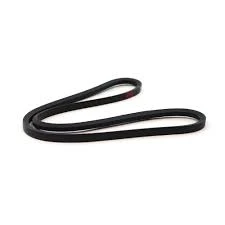- Arabic
- French
- Russian
- Spanish
- Portuguese
- Turkish
- Armenian
- English
- Albanian
- Amharic
- Azerbaijani
- Basque
- Belarusian
- Bengali
- Bosnian
- Bulgarian
- Catalan
- Cebuano
- Corsican
- Croatian
- Czech
- Danish
- Dutch
- Afrikaans
- Esperanto
- Estonian
- Finnish
- Frisian
- Galician
- Georgian
- German
- Greek
- Gujarati
- Haitian Creole
- hausa
- hawaiian
- Hebrew
- Hindi
- Miao
- Hungarian
- Icelandic
- igbo
- Indonesian
- irish
- Italian
- Japanese
- Javanese
- Kannada
- kazakh
- Khmer
- Rwandese
- Korean
- Kurdish
- Kyrgyz
- Lao
- Latin
- Latvian
- Lithuanian
- Luxembourgish
- Macedonian
- Malgashi
- Malay
- Malayalam
- Maltese
- Maori
- Marathi
- Mongolian
- Myanmar
- Nepali
- Norwegian
- Norwegian
- Occitan
- Pashto
- Persian
- Polish
- Punjabi
- Romanian
- Samoan
- Scottish Gaelic
- Serbian
- Sesotho
- Shona
- Sindhi
- Sinhala
- Slovak
- Slovenian
- Somali
- Sundanese
- Swahili
- Swedish
- Tagalog
- Tajik
- Tamil
- Tatar
- Telugu
- Thai
- Turkmen
- Ukrainian
- Urdu
- Uighur
- Uzbek
- Vietnamese
- Welsh
- Bantu
- Yiddish
- Yoruba
- Zulu
ऑगस्ट . 09, 2024 02:05 Back to list
An Overview of Power Transmission Timing Belts and Their Applications in Various Industries
The Importance of Power Transmission Timing Belts in Modern Machinery
Power transmission timing belts play a crucial role in the functioning of various machinery and engines across diverse industries. These belts, characterized by their toothed design, enable the synchronous transfer of rotational motion and power between different components, ensuring smooth and efficient operation. As technology evolves, the importance of high-quality timing belts becomes more pronounced, impacting performance, reliability, and maintenance in automotive, manufacturing, and other sectors.
Understanding Timing Belts
Timing belts, often referred to as synchronous belts, are designed to manage the timing of engine functions such as valve operation and crankshaft movement. Unlike regular V-belts, which can slip and lead to timing issues, timing belts are engineered to maintain precise synchronization due to their unique toothed design. This ensures that the rotation of the crankshaft is directly matched with that of the camshaft, allowing for optimal performance and efficiency.
The construction of timing belts typically involves a blend of materials such as neoprene or polyurethane, reinforced with strong fibers like fiberglass or steel. This combination not only provides flexibility and durability but also enhances the belt's resistance to wear, heat, and oil, making it suitable for demanding environments.
Applications in Automotive Industry
In the automotive sector, timing belts are integral to the internal combustion engine operations. They control the timing of the engine's valves, which is critical for maintaining proper airflow and optimizing combustion. A well-maintained timing belt ensures that the engine runs smoothly, boosts fuel efficiency, and minimizes emissions. Conversely, a worn or broken timing belt can lead to severe engine damage, costly repairs, and in some cases, complete engine failure.
Manufacturers often recommend specific intervals for timing belt replacements, typically between 60,000 to 100,000 miles, depending on the vehicle's make and model. Regular maintenance and timely replacement can prevent unexpected breakdowns and extend the overall lifespan of the engine.
power transmission timing belt

Significance in Industrial Machinery
Beyond automotive applications, timing belts are crucial in various industrial machinery. They are commonly used in conveyor systems, robotic arms, and other automated systems where precision timing is essential for operational efficiency. These belts facilitate the coordinated movement of machine components, reducing the risk of mechanical failure and enhancing productivity.
In manufacturing settings, where downtime can lead to significant losses, employing high-quality timing belts can dramatically improve reliability. The use of timing belts in these applications ensures that machines operate with minimal noise and vibration, contributing to a safer and more efficient working environment.
Innovations and Advances
As industries continue to evolve, so does the technology surrounding timing belts. Advances in material science and engineering have led to the development of belts with improved strength, flexibility, and resistance to harsh operating conditions. Manufacturers are increasingly focusing on producing belts that are not only durable but also environmentally friendly.
Moreover, the integration of smart technologies in timing belt systems is on the rise. Sensors can now monitor the condition of the belt in real-time, providing manufacturers with data that can predict wear and tear. This predictive maintenance approach helps in planning replacements before failures occur, further enhancing operational efficiency.
Conclusion
In conclusion, power transmission timing belts are essential components in both the automotive and industrial sectors. Their ability to ensure synchronized motion and reduce the risk of mechanical failures underpins the efficiency of modern machinery. As technology advances, the ongoing improvements in timing belt design and materials promise to enhance their performance and reliability further. Investing in high-quality timing belts and adhering to maintenance schedules is crucial for maximizing the performance and lifespan of machinery across various applications.
-
Korean Auto Parts Timing Belt 24312-37500 For Hyundai/Kia
NewsMar.07,2025
-
7PK2300 90916-T2024 RIBBED BELT POLY V BELT PK BELT
NewsMar.07,2025
-
Chinese Auto Belt Factory 310-2M-22 For BMW/Mercedes-Benz
NewsMar.07,2025
-
Chinese Auto Belt Factory 310-2M-22 For BMW/Mercedes-Benz
NewsMar.07,2025
-
90916-02660 PK Belt 6PK1680 For Toyota
NewsMar.07,2025
-
drive belt serpentine belt
NewsMar.07,2025

